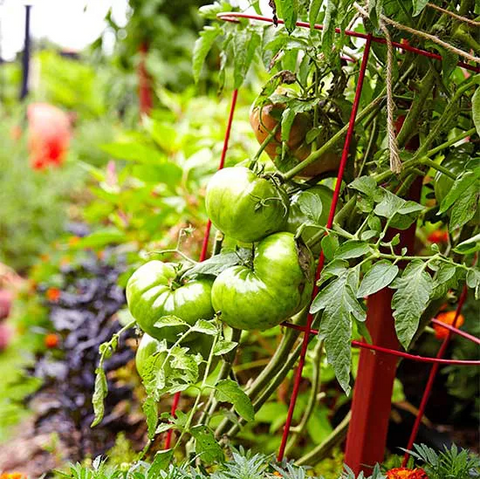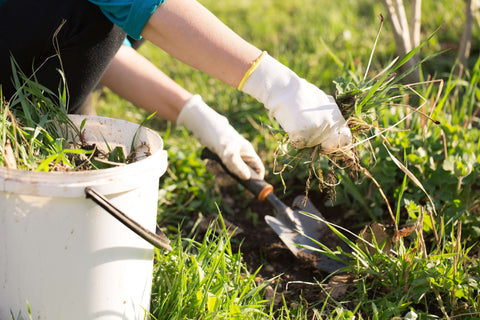Gardening is a delightful and rewarding hobby, but it often comes with the challenge of limited space, especially for urban dwellers or those with small yards. However, there's a solution that allows you to maximize your growing potential: intensive gardening with raised beds. Raised beds are versatile, space-efficient, and provide excellent control over soil conditions, making them a perfect choice for high-yield gardening in limited spaces. In this comprehensive guide, we will explore the concept of intensive gardening with raised beds, from the benefits and techniques to plant selection and maintenance, empowering you to grow an abundance of fresh produce even in the smallest of spaces.

The Advantages of Raised Bed Gardening
Before we dive into the details of intensive gardening with raised beds, let's understand why this approach is so advantageous:
1. Optimal Soil Quality
- Raised beds allow you to create the ideal growing environment by filling them with high-quality soil, free from compaction and weeds. This results in healthier plants with better access to nutrients.
2. Improved Drainage
- Raised beds promote excellent drainage, preventing waterlogged soil and root rot. This is especially important for areas with heavy rainfall.
3. Warmer Soil Temperature
- Raised beds tend to warm up more quickly in the spring, allowing for earlier planting and extended growing seasons.
4. Weed Control
- Elevated soil in raised beds means fewer weeds to contend with. You can focus your efforts on tending to your crops rather than constant weeding.
5. Space Efficiency
- Raised beds are perfect for small spaces, as they maximize planting area while providing defined pathways for easy access.
6. Pest Management
- Raised beds can be equipped with barriers like fencing or netting to deter pests and protect your crops.
7. Accessibility
- The raised height of these beds makes gardening more accessible, reducing the need for bending or kneeling, which can be beneficial for gardeners with physical limitations.
Designing Your Raised Bed Garden
Creating an intensive raised bed garden starts with thoughtful planning and design. Here's how to get started:
1. Choose a Location
- Select a spot that receives at least 6 to 8 hours of sunlight per day, as most vegetables thrive in full sun.
- Ensure the location is easily accessible for planting, watering, and harvesting.
2. Select the Bed Size
- The size of your raised bed depends on the available space and your gardening goals. Typically, raised beds are 3 to 4 feet wide to allow easy reach from both sides and 8 to 12 feet long.
- Consider the height of the bed as well, with 12 to 18 inches being a common choice.
3. Materials for Raised Beds
Raised beds can be constructed from various materials, including:
- Wood: Cedar and redwood are popular choices due to their resistance to rot. Avoid treated lumber as it may contain chemicals that can leach into the soil.
- Concrete Blocks: Stacked concrete blocks create durable and long-lasting raised beds.
- Galvanized Steel: Metal beds are sturdy and can be a stylish addition to your garden.
- Recycled Materials: Get creative by repurposing materials like old tires, pallets, or even galvanized troughs for raised beds.
4. Layout and Spacing
- Plan your garden bed layout, leaving adequate spacing between beds for easy movement and maintenance.
- Ensure proper spacing between crops to prevent overcrowding, which can lead to disease and reduced yields.
5. Soil Preparation
- Before filling your raised bed, remove any existing weeds or grass from the area.
- Fill the bed with a high-quality garden soil mix or a combination of topsoil, compost, and other organic matter. Aim for a loose, well-draining mix.
6. Pathways
- Create defined pathways between raised beds using materials like wood chips, gravel, or stepping stones. This helps with weed control and accessibility.

Intensive Planting Techniques
Intensive gardening with raised beds is all about making the most of your limited space. Here are some techniques to maximize your yields:
1. Square Foot Gardening
- Square foot gardening is a highly organized method where you divide your raised bed into square-foot sections. Each section is planted with a specific number of crops, depending on their size.
- This technique minimizes wasted space and allows you to grow a variety of crops in a small area.
2. Vertical Gardening
- Vertical gardening involves training plants to grow upward on trellises, stakes, or fences. This technique is perfect for vining plants like tomatoes, cucumbers, and beans.
- Vertical gardening not only saves horizontal space but also increases air circulation and sunlight exposure for healthier plants.
3. Succession Planting
- Succession planting is the practice of planting new crops as soon as one crop is harvested. This ensures a continuous supply of fresh produce throughout the growing season.
- For example, after harvesting lettuce, you can plant another crop like radishes in the same spot.
4. Interplanting
- Interplanting involves planting two or more crops in close proximity to each other. This maximizes space and can have beneficial effects on pest control and soil health.
- For instance, planting basil among your tomatoes can deter certain pests and improve tomato flavor.
5. Companion Planting
- Companion planting is the strategic placement of crops that can mutually benefit each other. Some plants may repel pests or improve soil conditions for neighboring crops.
- Research companion planting guidelines to optimize your raised bed garden's productivity.
Plant Selection for Raised Beds
Choosing the right plants for your raised beds is essential for success. Here are some high-yield options that thrive in raised beds:
1. Tomatoes
- Tomatoes are a favorite among gardeners and perform exceptionally well in raised beds, especially when trellised.
2. Peppers
- Both sweet and hot peppers flourish in the well-draining soil of raised beds.
3. Lettuce and Greens
- Leafy greens like lettuce, spinach, and kale are excellent choices for intensive gardening, as they can be planted close together.
4. Herbs
- Herbs like basil, cilantro, and parsley can be interplanted with other crops or grown in their dedicated small beds.
5. Cucumbers
- Cucumbers can be trained to grow vertically, saving space and ensuring straight fruit.

6. Radishes and Carrots
- These root vegetables thrive in raised beds with loose, well-amended soil.
7. Bush Beans
- Bush beans are compact and produce a bountiful harvest in a small space.
8. Zucchini and Summer Squash
- These squash varieties can be grown vertically or in raised mounds within the bed.
Maintenance Tips for Raised Bed Gardens
Maintaining your intensive raised bed garden is essential for continued success. Here are some maintenance tips:
1. Watering
- Raised beds can dry out more quickly than in-ground gardens. Ensure consistent moisture levels by watering as needed, typically 1-2 inches per week.
2. Mulching
- Apply mulch to retain soil moisture, suppress weeds, and regulate soil temperature.
3. Fertilization
- Regularly feed your plants with organic fertilizers or compost to replenish nutrients in the soil.
4. Pest Control
- Monitor your garden for pests and address issues promptly. Consider using physical barriers like row covers to protect your crops.
5. Crop Rotation
- To prevent soil depletion and disease buildup, practice crop rotation by planting different families of crops in successive years.
6. Pruning and Thinning
- Trim and thin your plants as needed to improve airflow, reduce overcrowding, and promote healthy growth.
Conclusion: Abundant Harvests in Small Spaces
Intensive gardening with raised beds is a game-changer for gardeners looking to maximize their yields in limited spaces. With proper planning, design, and maintenance, you can cultivate a thriving garden that provides an abundance of fresh produce, herbs, and flowers. Whether you have a small backyard, a balcony, or a rooftop, raised beds offer a flexible and efficient way to transform any space into a flourishing oasis of greenery and flavor. So, roll up your sleeves, grab your gardening tools, and embark on the journey of intensive gardening with raised beds – where big harvests come from small spaces.









